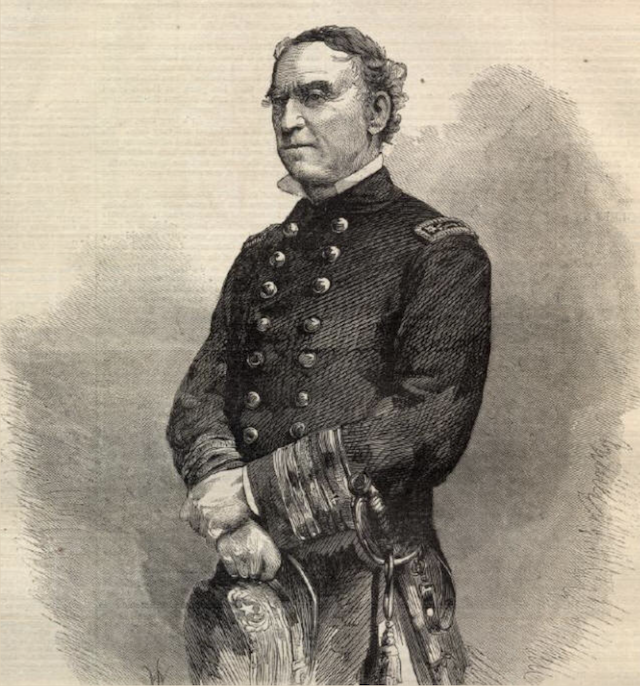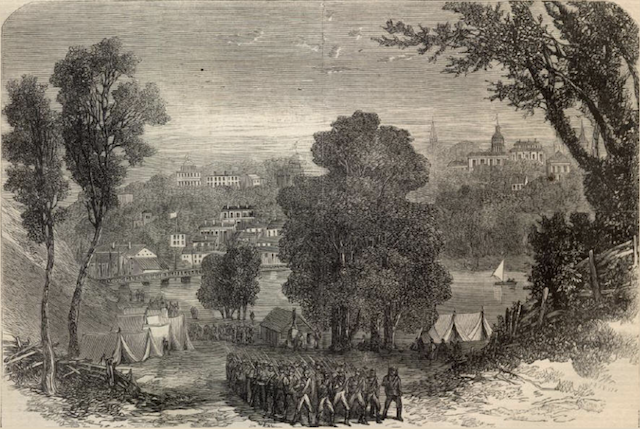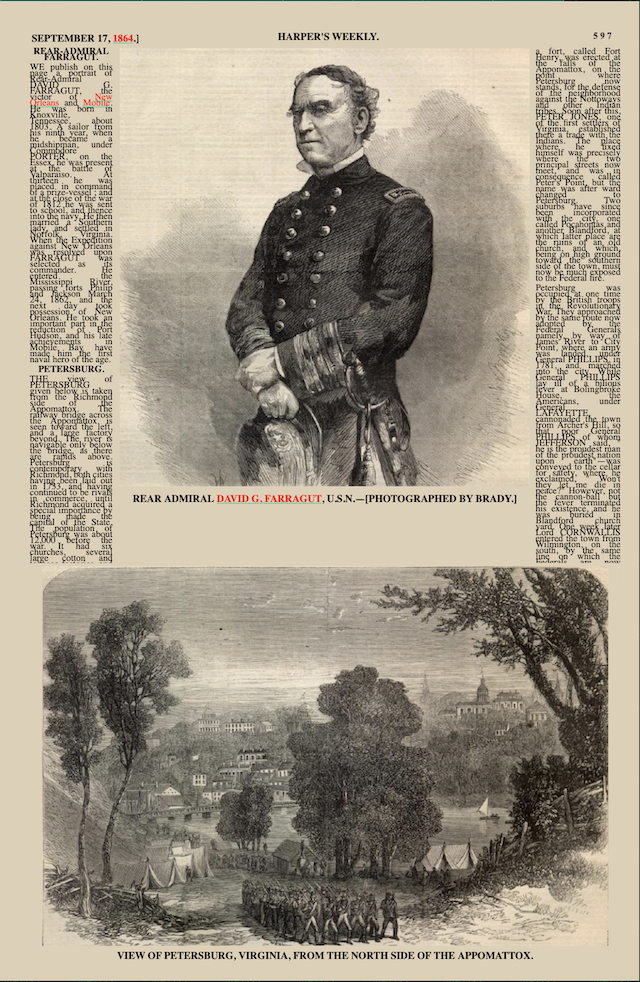During the Civil War, Americans relied on Harper’s Weekly as their primary source of news on the war. These newspapers contained detailed accounts of the battle, and insightful analyses of both the war and the politics of the day. Today, they make for incredible reading.

Rear Admiral David G. Farragut, U.S.N. — [Photographed by Mathew Brady.]
Rear-Admiral Farragut
WE publish on this page a portrait of Rear-Admiral DAVID G. FARRAGUT, the victor of New Orleans and Mobile. He was born in Knoxville, Tennessee, about 1803. A sailor from his ninth year, when he became a midshipman, under Commodore PORTER, on the Essex, he was present at the battle of Valparaiso. At thirteen he was placed in command of a prize-vessel; and at the close of the war of 1812 he was sent to school, and thence into the navy. He then married a Southern lady, and settled in Norfolk, Virginia. When the Expedition against New Orleans was resolved upon FARRAGUT was selected as its commander. He entered the Mississippi River, passing forts Philip and Jackson March 24, 1862, and the next day took possession of New Orleans. He took an important part in the reduction of Port Hudson, and his late achievements in Mobile Bay have made him the first naval hero of the age
Petersburg
THE view of PETERSBURG given below is taken from the Richmond side of the Appomattox. The railway bridge across the Appomattox is seen toward the left, and a large factory beyond. The river is navigable only below the bridge, as there are rapids above. Petersburg is contemporary with Richmond, both cities having been laid out in 1733, and having continued to be rivals in commerce, until Richmond acquired a special importance by being made the capital of the State. The population of Petersburg was about 12,000 before the war. It had six churches, several large cotton and tobacco factories, and was a place of considerable trade, exporting flour, cotton, and tobacco. As early as 1645 a fort, called Fort Henry, was erected at the falls of the Appomattox, on the point where Petersburg now stands, for the defense of the neighborhood against the Nottoways and other Indian tribes. Soon after this, PETER JONES, one of the first settlers of Virginia, established there a trade with the Indians. The place where he fixed himself was precisely where the two principal streets now meet, and was in consequence called Peter’s Point, but the name was after ward changed to Petersburg. Two suburbs have since been incorporated with the city, one called Pocahontas and another Blandford, at which latter place are the ruins of an old church, and which, being on high ground toward the southern side of the town, must now be much exposed to the Federal fire.
Petersburg was occupied at one time by the British troops in the Revolutionary War. They approached by the same route now adopted by the Federal Generals namely, by way of James River to City Point, where an army was landed, under General PHILLIPS, in 1781, and marched into the city. While General PHILLIPS lay ill of a bilious fever at Bolingbroke House, the Americans, under General LAFAYETTE, cannonaded the town from Archer’s Hill, so that poor General PHILLIPS of whom JEFFERSON said, “he is the proudest man of the proudest nation upon earth” – was conveyed to the cellar for safety, where he exclaimed, “Won’t they let me die in peace?” However, not the cannon-ball but the fever terminated his existence, and he was buried in Blandford church yard. One week later Lord CORNWALLIS entered the town from Wilmington, on the south, by the same line on which the Federals are now threatening the town and his Lordship fixed his head-quarters at Bolingbroke House.

View of Petersburg, Virginia, From the North Side of the Appomattox

Snapshot of Original Publication from Harper’s Weekly
